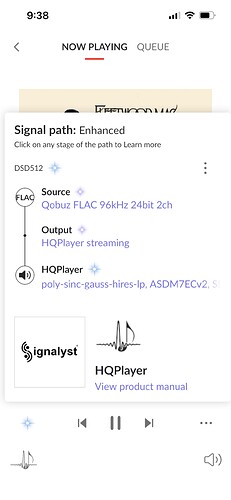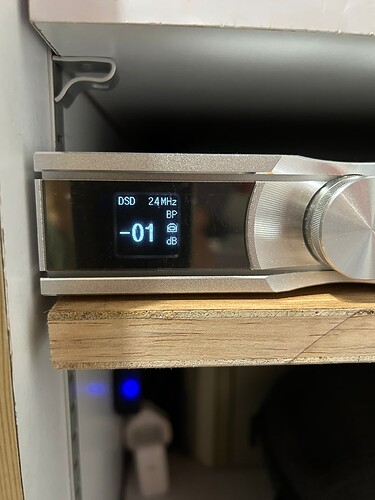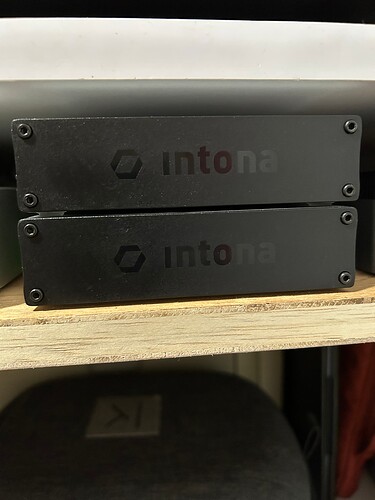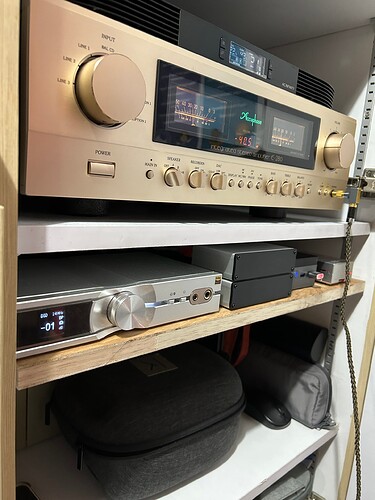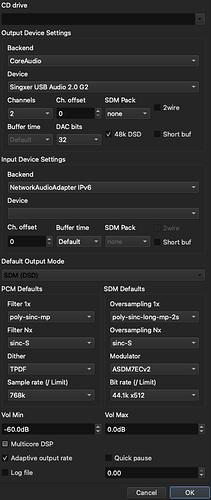What HW (CPU, GPU) are you using to be able to run these filters with DSD1024?
If you read back in the embedded thread you can experience his journey in the quest for DSD1024.
![]()
@ffk thank you ![]() indeed it is a journey.
indeed it is a journey.
@Shaul_Ben-Yossef , if you are interested in 2 channel 7ECv2@1024, here is my very detailed write-up on latest set up, harware, firmware, software etc. it relatively simple and reasonably cost efficient (no GPU)
For 7k you can have your own. ![]()
You can now have a better processor too as the 13900k is available.
Time to upgrade @IgorSki ![]()
![]()
![]()
@jussi_laako I have recently started enjoying your software and I must admit it’s a very audible jump in sound quality from Roon’s own upsampling. In fact, your LNS15 noise-shaper is so different that it’s taken my ears a while to adjust to it.
I have never owned a Chord product and am in no way a “Chord fanboy”… however, I can’t help but notice that Chord DAVE DAC seems to offer 17th order PCM noise-shaping which, correct me if I’m wrong, appears to push the noise down a further 100dB compared to LNS15. If this is correct,then that would be a massive difference. On paper, I’d normally think that such low numbers don’t matter anyway, but having now experienced the difference between NS9 and LNS15 myself, I am curious as to what the 17th order can offer.
Am I right in thinking that the above is not offered in HQPlayer? Is so - why is that the case?
I don’t know what you output (how many bits). But with either one the digital noise floor is well below your physically possible analog noise floor.
With noise shaper and 32-bit output, your digital noise floor can be 100 dB below your analog noise floor.
Chord DAVE is technically limited in so many ways, especially in terms of digital filter oversampling ratios, modulator and analog performance, that considering such PCM noise shaper levels is irrelevant.
If NS9 and LNS15 sound different to you, it is because they are designed for different purpose (output rate) and different algorithm. Order of the shaper is irrelevant here.
For any algorithm in HQPlayer, there needs to be a clear goal. And then we can see what kind of algorithm can reach the specified goal.
@jussi_laako I use a Gustard X26 Pro in NOS mode which is supposed to bypass its internal filtering. To my ears, it surely does (at least the initial stages of it) as music in NOS mode sounds very low-res and hazy (without any external upsampling applied) and each of Roon’s and HQPlayer’s filters sounds distinctly different (some more than others). I’ve left the bit settings at “default” in the HQPlayer.
I’ve only experimented with a few of HQPlayer’s filters so far. Sinc-L has sounded the cleanest to me but Sinc-M adds a very addictive depth and holography (in terms of each sound clearly being distinct from the background) that I don’t think I’ve experienced to this extent before. This effect to some degree disappears with the NS9 noise-shaper where things sound a bit more like I was used to hearing them though Roon’s upsampling, i.e. there’s seemingly more “air” and higher notes are a bit sharper (or perhaps just perception of them being so due to that extra “air”). Not sure what’s going on here if it’s not the noise-shaper itself becase as soon as I switch over to LNS15 things get denser, a bit “darker”/meatier and soundstage gets deeper.
The modulator I’ve been using for all settings is ASDM7EC, bit rate 48k x 128 (just left it as it was).
Are there specific settings which you would recommend for this DAC? My ears are telling me that its NOS mode really allows external filtering to shine; having said that, I lack technical knowledge to know what the DAC still does to the sound upon receiving the externally-upsampled sound.
Since it is ESS Sabre with 32-bit input, you can also use just TPDF or Gauss1 dither. NS5 is also fine if you like. Of course these apply only if you use PCM output mode.
For SDM output, if you have enough processing power, I’d recommend using ASDM5ECv2 or ASDM7ECv2 at DSD512. With ESS it is best to get started with ASDM5ECv2, especially at lower DSD rates such as DSD128 you have.
In my system I also have Gustard X26 pro .And for me Sinc-m have better sound , modulator dsd7 , and adaptive output rate 48×256 ,because my pc can’t work with new modulators.But in future I will change my pc…
Not even ASDM7?
I’ve tried DSD256 and it certainly sounds different from PCM - even denser, smoother. Whether it’s objectively “better” - no idea, but certainly adds a flavour that can be desirable at times. When I go for 512 the playback pauses every couple of seconds, which is strange, given that according to Task Manager there’s plenty of CPU power left (13th gen i5). It would appear that the software is unable to fully utilise it (all cores etc.).
It seems to me that PCM to DSD conversion is very complicated and involves a lot of calculations in order to eradicate the noise created in the process. Are there any benefits to feeding my ESS 9038Pro DAC with DSD as opposed to PCM (in terms of how the DAC/chip processes it)?
You can completely skip all the ESS chip digital filtering if you take it to DSD256 or DSD512 if you can.
Or in other words, you can do all digital filtering in HQPlayer.
Only thing you can’t skip on ESS chip is it’s modulator. There’s many AKM based DACs (plus iFi Audio’s Burr Brown based DACs and some others by Cirrus Logic and ROHM) that allow you to do all DSP in HQPlayer (the DACs that let you run the DAC in ‘DSD Direct’ mode)
I have an SMSL D-6 that runs in DSD Direct mode at DSD512 with balanced outputs and measures nicely. Very cheap DAC too.
And then there is the more expensive discrete options like Holo Audio and T+A etc
Need a bit of an assist here please… Read thru hundreds of posts… maybe too simple? lol.
Running Mac mini/Roon/HQPlayer.
Singxter usb bridge, to my Matrix X.
Why am I not getting DSD output? Sounds awesome… but why no DSD ? Does not matter what I play, or what filters I use…
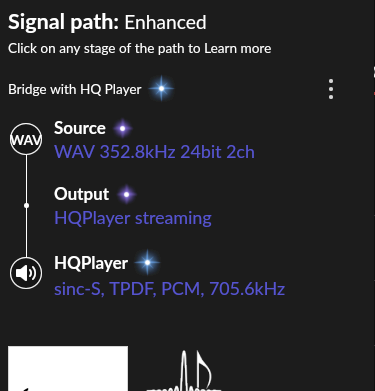
Try change modulator to ASDM7 (less CPU intensive).
Try change SDM Pack to “DoP”
And change Bit Rate to “44.1k x256”
Set Oversampling Nx = poly-sinc-short-mp-2s
Also set Vol Max to -3dB
Disable 48k DSD
Start with something working first and then try other combo’s
Walk before run ![]()
How are they connected? Spdif or I2S?
I just changed dsd7 to asdm7 in the settings. It works! Thanks!
Oh my goodness, having switched between different filters (mostly Sinc-M, also in DSD 256) and not being fully satisfied (smoothness gained at the cost of vividness and punch), I’ve given Sinc-L LNS15 (PCM) a proper listen… and it’s jaw-droppingly good. I know, non-apodising etc., but I guess I just have a strong preference for clean, neutral sound.
It’s exactly what I was looking for - Roon’s Precise Linear-Phase filter but so much more polished and refined. Best audio I’ve heard so far.
You can adjust core utilisation to some extent by switching between “Multicore DSP” set to grayed or checked. However, not all calculations can be mathematically parallelized, so there are limitations how much of the work can be done in parallel on multiple cores.
It is complicated to create best possible quality noise which is inherent to any SDM and fundamental for it’s operation. ESS chips do similar inside, as do Chord DACs too. Then the SDM D/A conversion process removes this noise in analog domain and leaves just the audio signal.
This is also how class-D amplifiers work.
